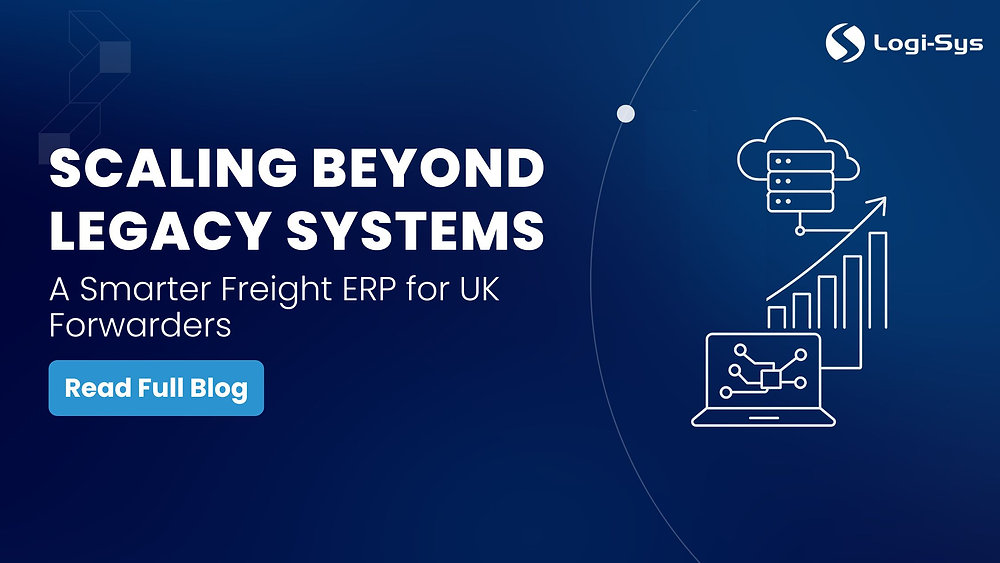
Legacy tools were built for stability, not scalability.
But for UK freight forwarders, today’s market demands faster turnarounds, integrated operations, and total visibility. As business scales, older freight systems begin to creak under pressure—siloed data, disconnected teams, and growing manual workload.
This is where forwarders are reconsidering their digital strategy—not by adding more tools, but by shifting to a smarter, unified freight management system.
Why Traditional Freight Systems Fall Short
Many UK forwarders still rely on legacy freight forwarding software that wasn’t built for modern demands. Common friction points include:
-
Disconnected modules for operations, finance, and CRM
-
Manual duplication of job and billing data
-
Limited visibility across shipments and branches
-
Inflexible workflows and outdated interfaces
-
VAT and compliance processes that still rely on spreadsheets
These issues don’t just waste time, they limit your ability to scale. What’s needed isn’t just a better tool, but a better foundation.
The Case for a Smarter ERP for Freight Forwarders
A modern ERP for freight forwarders unifies operations on a single platform—from shipment creation to invoicing, and from customer portals to profitability dashboards. That’s more than software—it’s infrastructure for growth.
The right freight ERP can help UK forwarders:
-
Manage multi-modal shipments (air, sea, road) from one interface
-
Automate operational milestones, job costing, and billing
-
Handle multi-currency, branch-level financials
-
Connect with shipping lines, agents, and customs platforms
-
Provide self-service visibility to customers and vendors
-
Enable VAT-ready financial reporting and audit trails
And crucially, scale without chaos.
What a Modern Freight Management System Must Deliver
A general-purpose TMS won’t do. UK forwarders need freight-specific ERP platforms with deep logistics logic and financial controls built-in. Here’s what to look for:
1. Multi-Modal Freight Handling
Manage consolidated, direct, or back-to-back shipments across air, ocean, and road—without switching between tools.
2. Built-In Financial Accounting
Track job profitability, generate invoices, manage collections, and streamline compliance from within the freight ERP.
3. Sales, CRM & Operations Integration
Convert leads into jobs, generate quotes, and track conversion metrics from one place. Sales and operations stay in sync.
4. Branch & Network Visibility
View consolidated dashboards across locations. Handle inter-branch reconciliation with zero duplication.
5. Customer and Vendor Portals
Give clients live tracking, documents, and invoices. Let vendors submit bills and view payment status online.
6. Mobile Access & Alerts
Enable approvals, notifications, and job status updates from mobile—ideal for agile teams and urgent turnarounds.
7. Workflow Automation & Compliance
Set role-based alerts and task flows. Maintain VAT compliance through automated records—not manual spreadsheets.
They need to deliver structure.
That’s why modern forwarders are choosing freight ERP software that unifies everything under one roof: jobs, documents, billing, customer service, and compliance. This reduces friction, improves response times, and frees up teams to focus on growth—not firefighting.
Logi-Sys, for example, offers a freight management system that’s purpose-built for UK freight forwarders – VAT-compliant, scalable, multi-modal, and fully cloud-based.
Final Word: Scale Smart with the Right Freight ERP
Growth in freight is a good problem to have, but only if your systems are ready for it.
By upgrading from legacy tools to a modern, intelligent ERP for freight forwarders, UK businesses can eliminate duplication, streamline compliance, and give every stakeholder—from operations to customers—the visibility they need.
The next phase of freight forwarding doesn’t start with another tool. It starts with the right platform.
